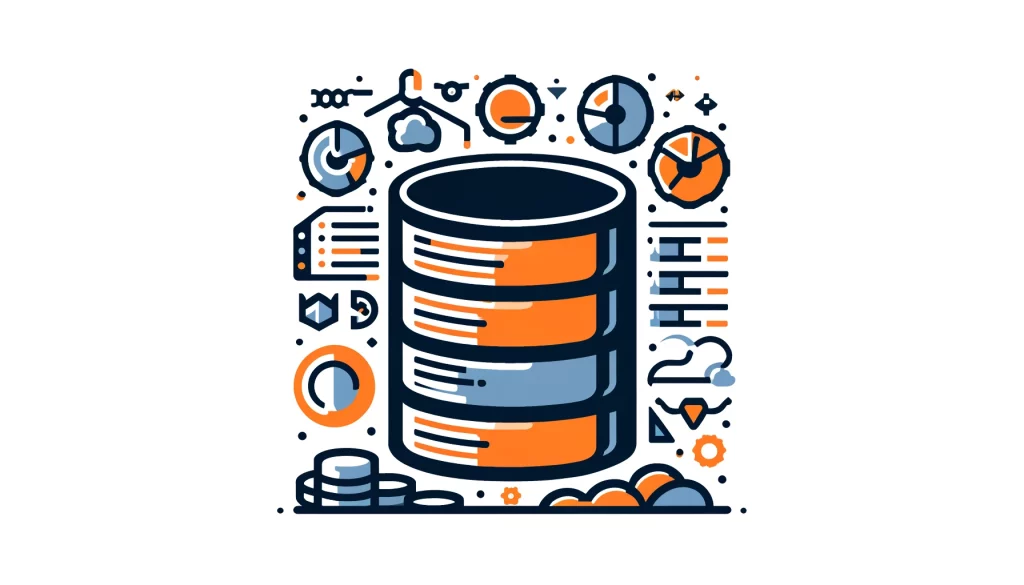
DDL: Data Definition Language

Data Definition Language (DDL) is an essential aspect of database management, particularly for those working with SQL databases.
DDL allows you to create and change the structure of a database. With it, you can:
- 1. Define tables
- 2. Create indexes
- 3. Set up schemas
- 4. Manage other database objects
This makes it easy to control the organization and layout of your database.
Data Definition Language is a part of the SQL language. It plays a vital role in creating and maintaining the core foundation of your database. It allows you to define and structure the database properly.
What is DDL?
DDL is a syntax used to create, modify, and delete objects. It looks like a programming language, but its goal is specifically defining data structures inside a database. Its purpose is to create and manage the storage structures for data within databases.
We use DDL statements to set up the framework or structure of a database. With them, you can create new tables, modify existing tables, and remove objects you no longer need. DDL establishes the core components of the database.
Some common examples
CREATE: Used to create new objects such as tables, indexes, or schemas
ALTER: Used to modify the structure of existing objects
DROP: Used to remove objects that are no longer required
A simple DDL example would be:
CREATE TABLE employees ( id INT PRIMARY KEY, name VARCHAR(50), department VARCHAR(50), salary DECIMAL(10,2) );
This statement creates a new table called “employees” with columns for id, name, department, and salary. It also specifies the data types for each column and defines the “id” column as the primary key.
These statements allow database administrators and developers to define the schema of a database. The schema acts as a blueprint, which describes organization and storing of data inside the database.
DDL in SQL Databases
In SQL databases, DDL is an integral part of the language. Its statements are not a separate language. SQL seamlessly integrates statements directly, rather than treating them as a separate language.
It integrates with the SQL language. This allows users to use simple English verbs like “CREATE” or “ALTER” to modify the database structure. The language is intuitive and easy to understand for making structural changes.
The commands in SQL are to manipulate and modify various database objects, such as:
– Users: Define and manage user accounts and their permissions
– Databases: Create, alter, and drop databases
– Schemas: Create and modify the logical structure of a database
– Tables: Create, alter, and drop tables that store the actual data
– Views: Define virtual tables based on the result of an SQL statement
– Columns: Add, modify, or delete columns within a table
– Functions: Create and manage user-defined functions
– Stored Procedures: Define and execute reusable code blocks for database operations
With DDL, you can create and customize objects like tables, indexes, and schemas. This allows you to tailor the database structure to fit the exact requirements of your application or business needs. DDL gives you flexibility to mold the database according to your specific use case.
Benefits
One of the primary advantages of DDL is its platform independence. The relational model is the basis for SQL databases. This model is independent of the specific platform or used infrastructure and not system-dependent.
The syntax stays mostly the same across different database providers like Oracle, MySQL, and Microsoft SQL Server. This consistency makes it easier for developers to work with multiple database systems. The independence of the DDL syntax is an advantage.
Another significant benefit is the ability to create scripts that define the structure of a database. These scripts serve multiple purposes, such as:
– Keeping a snapshot of the database structure for backup or documentation purposes
– Setting up test systems that mirror the production environment for development and testing
– Generating templates for new objects based on existing ones, saving time and effort
With DDL scripts, you can easily recreate an entire database or specific parts like tables or indexes. You can recreate an entire database without affecting the actual data stored in the database.
DDL allows you to define constraints like primary keys, foreign keys, and check constraints. These constraints enforce rules for data integrity. DDL allows you to define constraints like primary keys, foreign keys, and check constraints.
Here’s another DDL that demonstrates how to add a foreign key constraint:
ALTER TABLE employees ADD CONSTRAINT fk_department FOREIGN KEY (department) REFERENCES departments(name);
This statement alters the “employees” table by adding a foreign key constraint named “fk_department”. It specifies that the “department” column in the “employees” table references the “name” column in the “departments” table. This ensures that any value inserted into the “department” column of the “employees” table must exist in the “name” column of the “departments” table.
Enforcing data integrity is essential. It helps ensure the information stored in the database is reliable and accurate.
Best Practices for Using DDL
When working with Data Definition Language, adhering to established best practices is imperative to ensure the efficiency, sustainability, and security of your database. This ensures your database remains efficient, easy to maintain, and secure. Some key best practices include:
- Use meaningful and descriptive names for objects to enhance readability and understanding.
- Implement proper indexing to optimize query performance and improve data retrieval speed.
- Regularly review and optimize the database schema to ensure it remains efficient and aligned with the application’s requirements.
- Use version control systems to track changes made to the database schema and maintain a history of editing.
- Implement security measures, such as user authentication and authorization, to protect sensitive data and prevent unauthorized access.
Following best practices allows you to create a database that is well-organized, efficient, and secure. This database will serve as a strong foundation for your application or business needs.
Conclusion
Data Definition Language is a fundamental component of database management, especially for those working with SQL databases. DDL gives you the power to define and change the structure of a database. This includes tables, indexes, schemas, and other critical database objects. With DDL, you have control over organizing your database’s core components.
Understanding Data Definition Language and its role in managing databases is important. With this knowledge, you can create databases that are more efficient, organized, and easy to maintain. These databases will better support the needs of your applications and business.
Embracing DDL and following best practices ensures that your database is well-structured, optimized for performance, and secure.
As your application or business expands and changes over time, DDL will remain crucial. You’ll need it to modify your database structure. This allows your database to adapt and handle new requirements and challenges that arise.
Learning DDL is extremely valuable for database administrators and developers. For it is the foundation for managing databases effectively.
